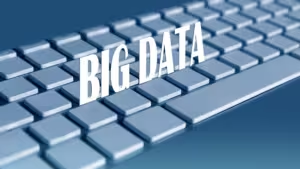Data Processing – We are swimming in an ocean of data, whereby every click, swipe, or transaction generates gazillions of information. But raw data is merely an uncut gemstone: full of potential but not shining bright. Now, welcome data processing: the modern magic through which the lead of raw information gets transformed into gold in the form of actionable insights.
We will now journey through this amazing world to learn how the perception of all changes with data processing, from business trends to scientific exploration.
The Journey of Data Processing
1. Data Collection: The Ingredients of Data Processing
Data collection is approached like a gourmet meal where the kinds of ingredients are chosen carefully toward the purpose of the investment. This can be anything from survey data to sensor readings, web analytics, or even plumbing into pre-existing databases. The trick is in striking a balance: you want to have enough data to paint a complete picture but not so much that you’re drowning in irrelevant information.

In our very connected world, sources of data are many. A smartphone traces the location; your health is being monitored by a fitness tracker, and all your activities on social media help to draw a picture of what you are interested in. The challenge lies in collecting data ethically and purposefully, with the end goal in mind.
2. Data Preparation: Cleaning and Organizing
Data is generally untidy by default, much like a junk drawer filled with odd things of various kinds. Most of the work of preparing data is sorting through the drawer to make what is useful more organized, and throwing away what is not. This includes cleaning errors, filling in pieces that are missing, and making formats standard.
Think of it as a detective activity: you are in search of anomalies, patterns, and connections. Is that spike in sales real, or is it a data entry error? Are those two customer records really the same person? It’s painstaking and requires an understanding of what is “normal” in your dataset.
3 Data Input: Setting the Stage
With the data cleaned up and ordered, it can now be input into our processing system. Technology has made this input step completely different. Optical character recognition can digitize printed documents in seconds. Electronic data interchange makes possible direct computer-to-computer communication, passing gigantic quantities of data in either direction without human intervention.
Inputs, therefore, will have to be chosen depending on various factors: the volume of data, the speed at which it will be required, and the resources available. Again, it is a balancing act between accuracy, efficiency, and cost.
4. Processing: Where it All Happens
It is during this processing that data alchemy finds its true heart, shaping this raw information into valuable insight. You can make all sorts of complex calculations, statistical analysis, or even apply machine learning algorithms, but it really depends on the purposes and the nature of your data.
This is what is quintessential in the real world: effective data processing isn’t just about applying the right techniques; it’s asking the right questions. The most sophisticated analysis won’t yield useful results if you’re not clear about what you’re trying to discover. Human insight remains imperative even in our increasing reliance on artificial intelligence and automated systems.
5. Data Output and Interpretation: Bringing Insights to Life
Now, this is the moment of truth: to present the result in a humanly understandable and useable way. In this stage, we rephrase the language of data into the language of decision-makers.
In the modern world, as volumes of data increase, data visualization has become one of the major competencies. A good graph or an interactive dashboard represents complex information in one glance, easing people’s minds to determine the trends and make informed decisions.

But it goes beyond mere data presentation; interpretation is storytelling. What does this imply for business, research, or society? What do we do about it? In that sense, human judgment and domain expertise are even more important.
6. Data Storage: The Preservation of Knowledge for Human Posterity
Interpretation is not the endgame. In a data-driven world, data is a treasure that needs to be preserved and safeguarded. Good storage allows us to revisit our analysis and finesse our models to derive new insights as our understanding evolves.
Security, accessibility, and scalability are other perspectives considered in this step. How do we ensure information that is sensitive is protected? How do we ensure the data remains usable years from now? All of these are some of the challenges addressed by the innovations of cloud storage and data lakes. They, however, do bring newly sharp questions of data governance and the ethical use of information to the fore.
The Impact of Data Processing
Data processing touches almost every part of modern life. When you use a GPS app to go somewhere, be sure that it is processing data with details of the traffic state and where you are. Your social media feed springs from complex algorithms that have analyzed your behaviour and preferences. The same can be true for the sophistication of weather forecasting, product recommendations, and fraud detection.
The processing of data in the business allows firms to respond better to customer behaviours and optimize their operations. In science, it is enabling breakthroughs in genetics and astrophysics. Doctors can issue a proper diagnosis and treatment plan.
With the enormous surge in the amount of data gathered and processed, the concerns over privacy, security, and ethical use of information increase as well. The future of data processing does not merely rely on technological developments; it relies on building up frameworks that ensure our future use of the great data alchemy for the greater good.
For more on CRISPR and Gene Editing, check out the following related articles. The role of Plant Hormones – the growth and development of plants The Menstrual Cycle – Understanding the Rhythm of Life Fractional Distillation of Liquefied Air – A Comprehensive Guide CRISPR and Gene Editing – Ethical Implications and Future Views AI in Healthcare – Remoulding Medical DiagnosisConclusion: The Never-Ending Story of Data
Data processing is a complex journey that transforms raw information into actionable insights. It’s a field that’s constantly evolving, with new technologies promising to revolutionize how we handle and interpret information.
Data processing and data interpretation will be maximized in the future. This is not for the sake of number-crunching but to know the stories, which implicitly exist in data, and use those stories to make at least a part of the world better.
So next time you come across a piece of data, from a sales report to a scientific study to your fitness tracker stats, think about the journey that piece of information has made. You may uncover the insights that are lying inside that data.
References:
- Aggarwal, C. C. (2015). Data Mining: The Textbook. Springer International Publishing.
- Dhar, V. (2013). Data science and prediction. Communications of the ACM, 56(12), 64-73.
- Kitchin, R. (2014). The data revolution: Big data, open data, data infrastructures and their consequences. Sage.
- Provost, F., & Fawcett, T. (2013). Data Science for Business: What you need to know about data mining and data-analytic thinking. O’Reilly Media, Inc.
- Siegel, E. (2016). Predictive analytics: The power to predict who will click, buy, lie, or die. John Wiley & Sons.
- Talend “What is Data Processing? ” https://www.talend.com/resources/what-is-data-processing/


